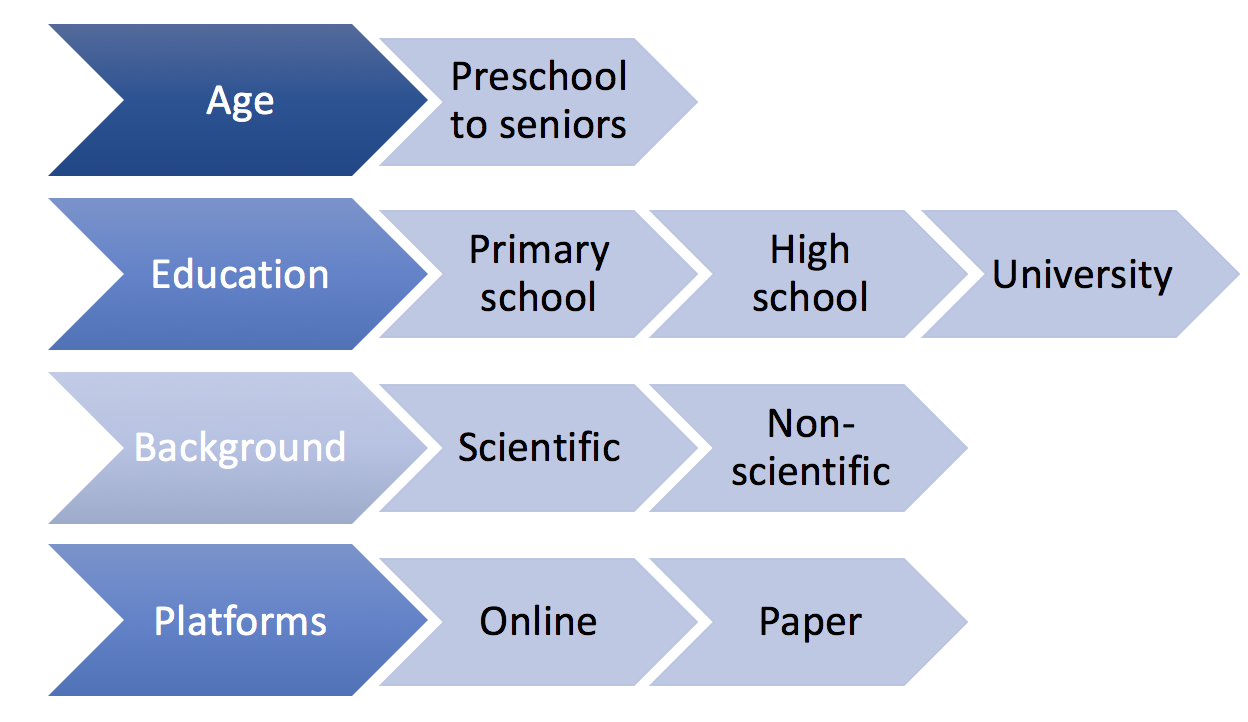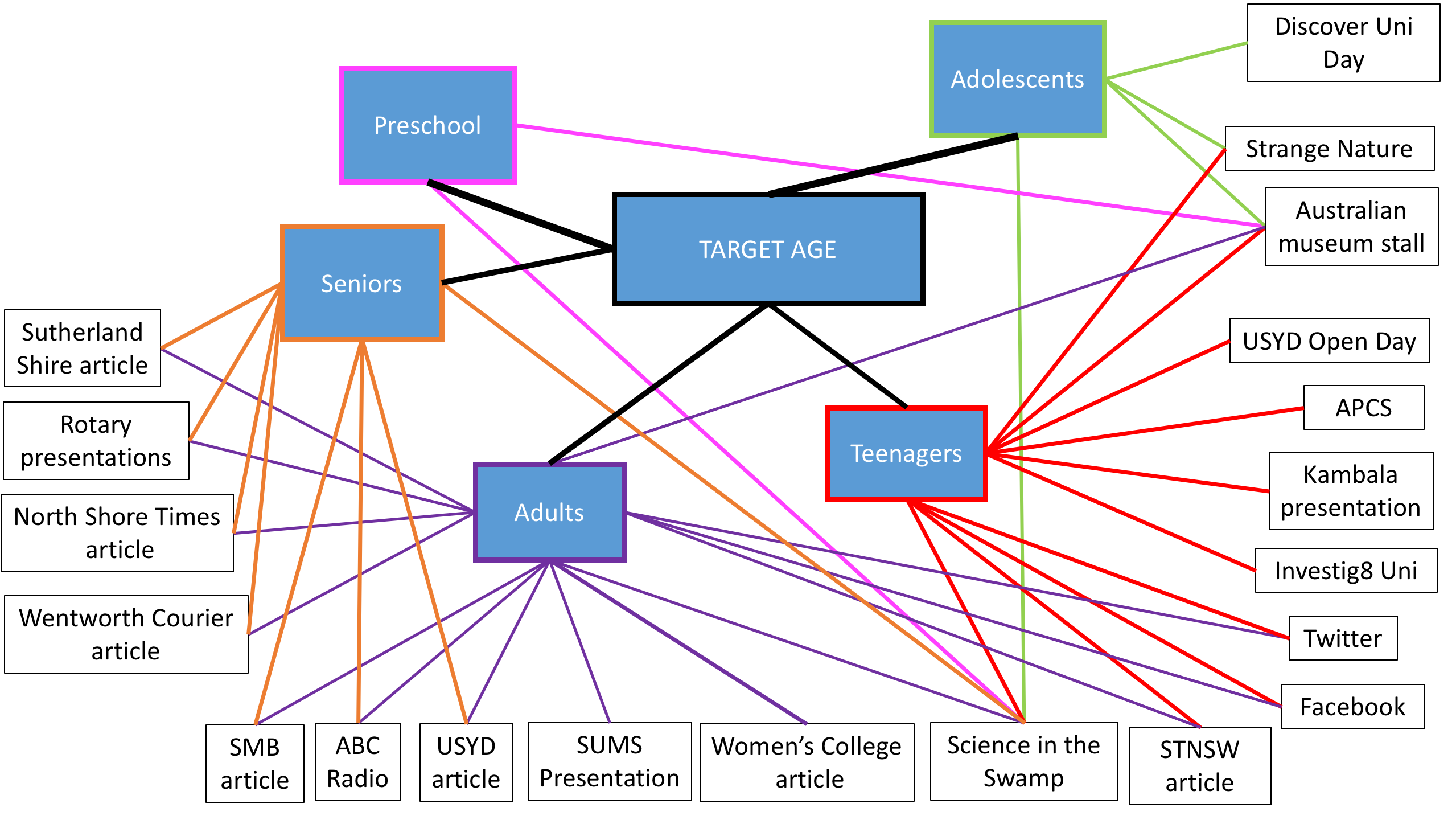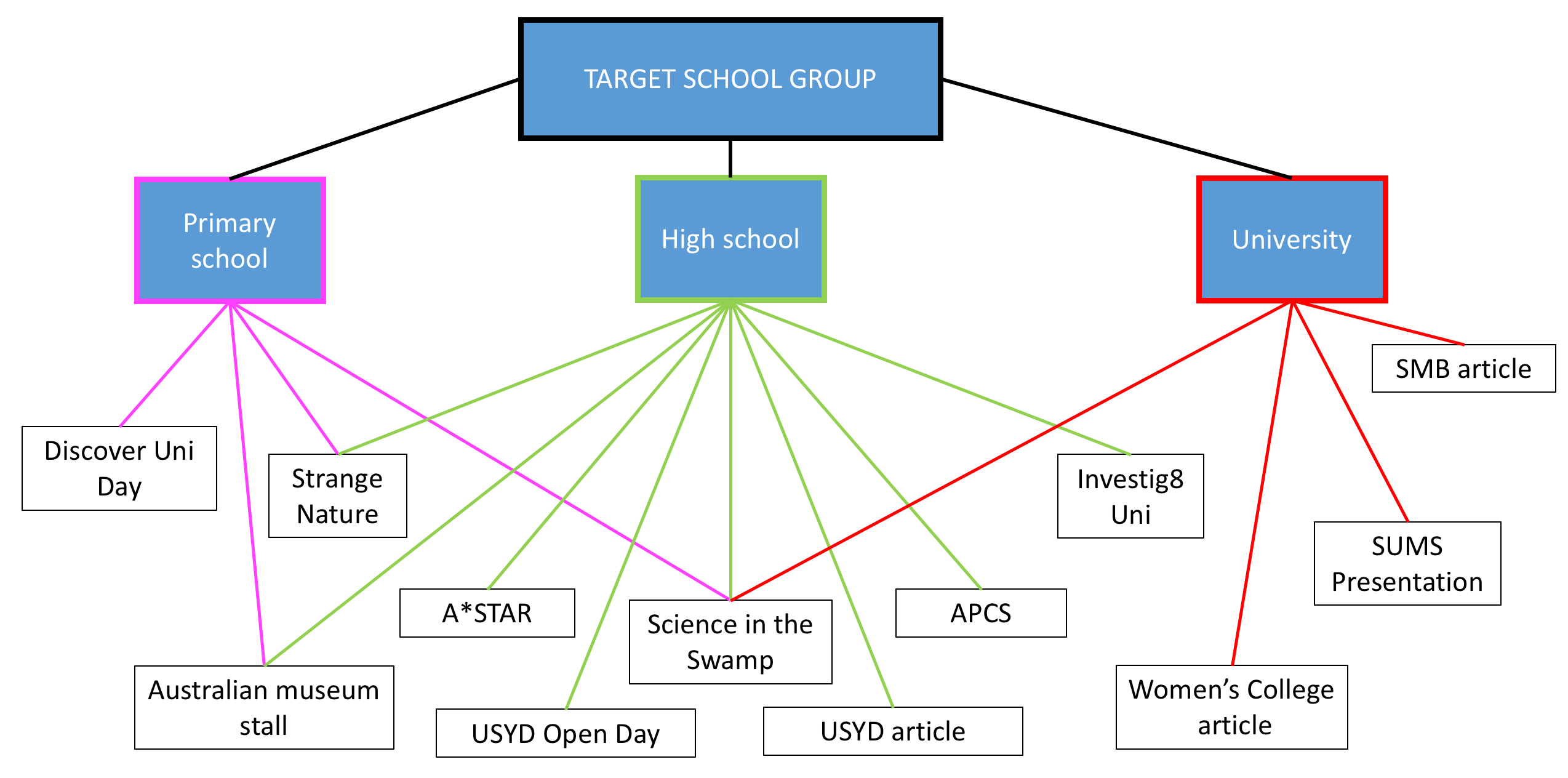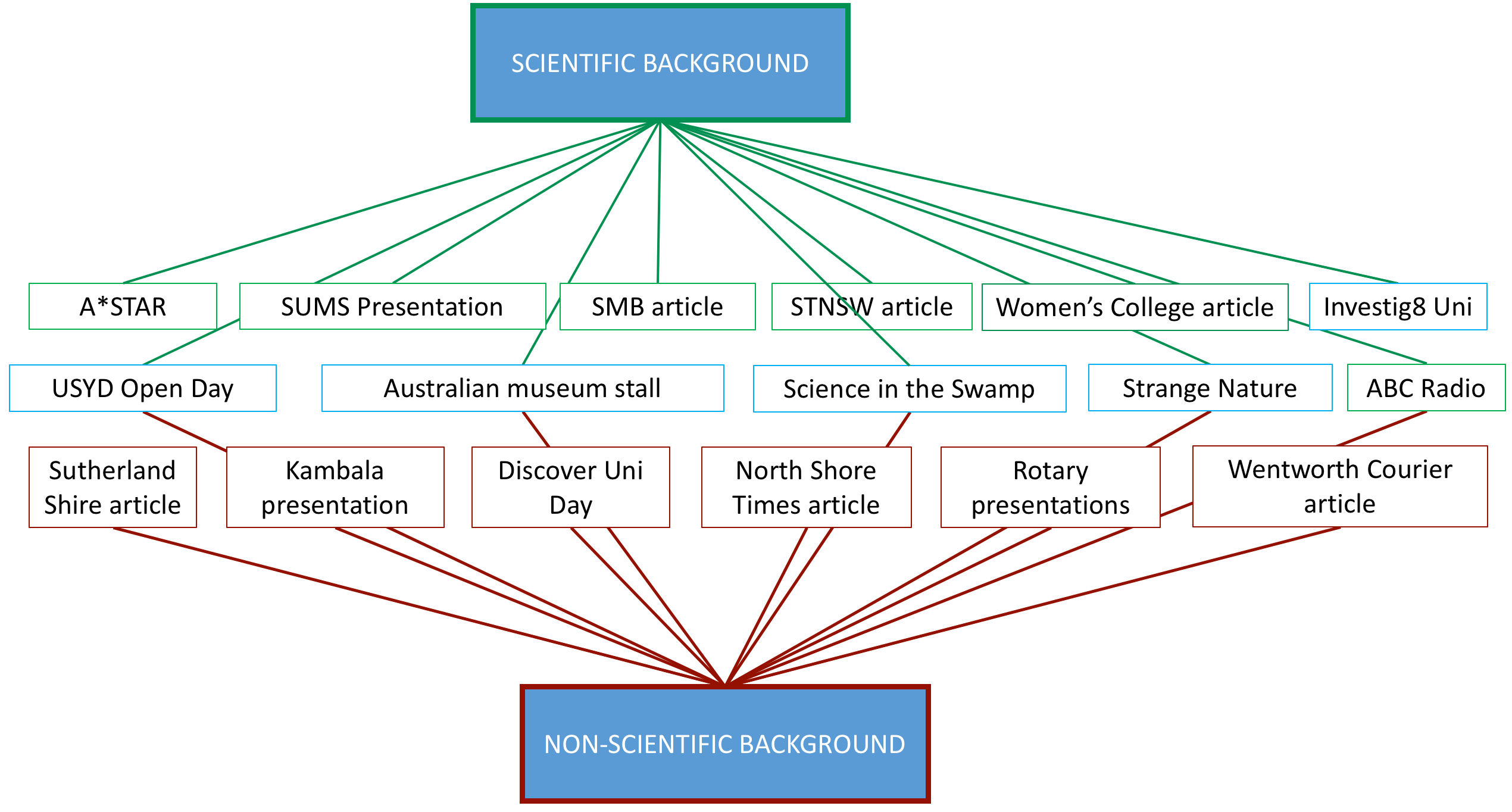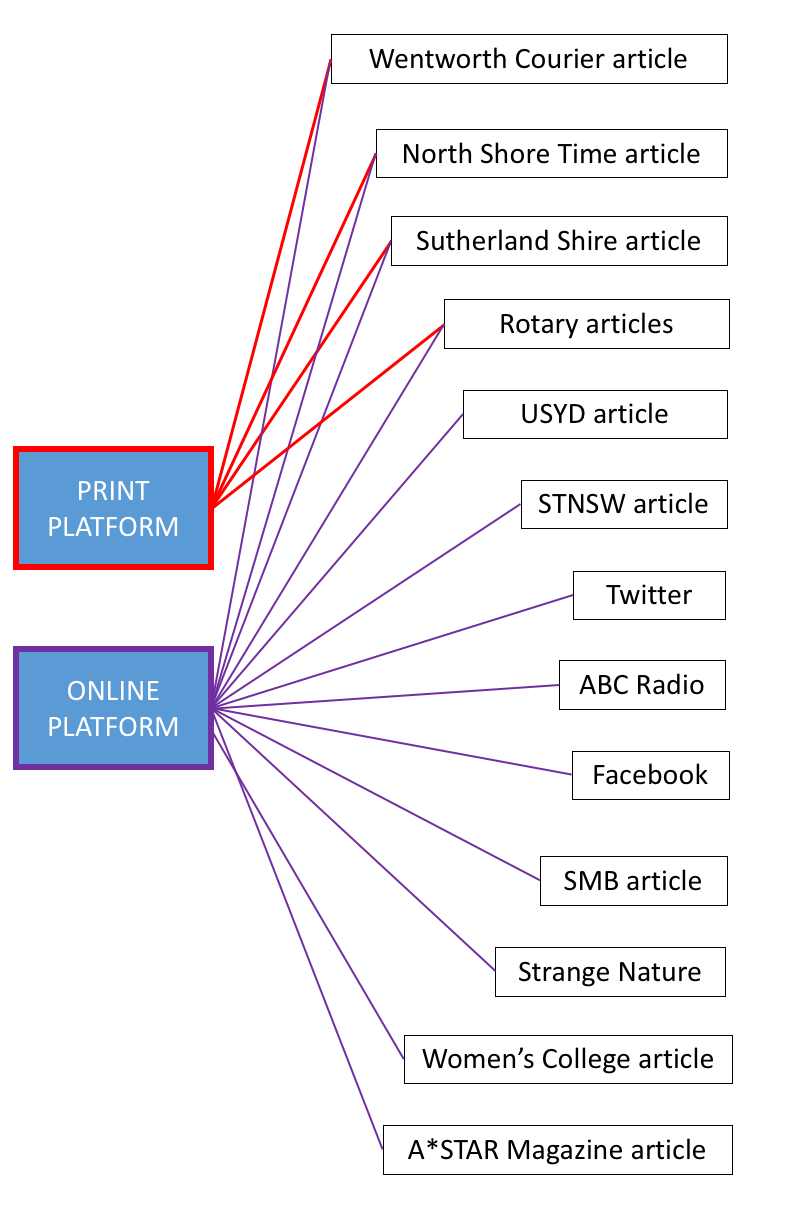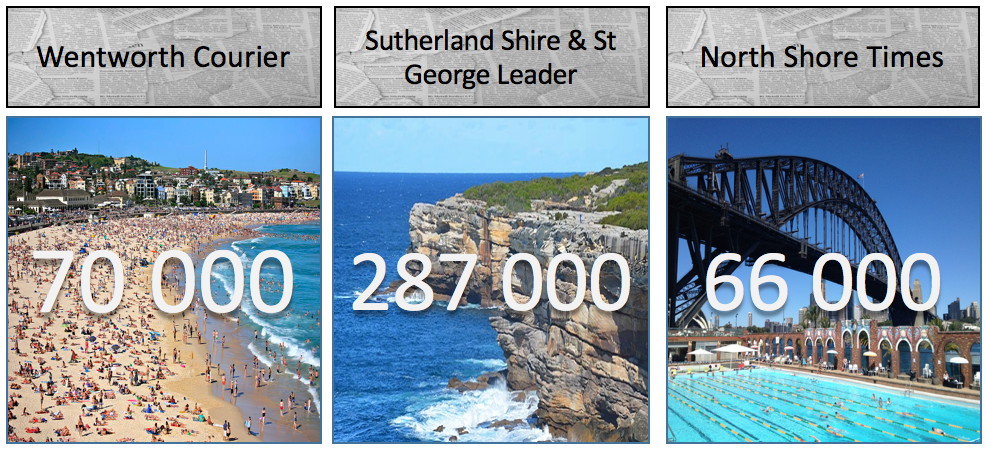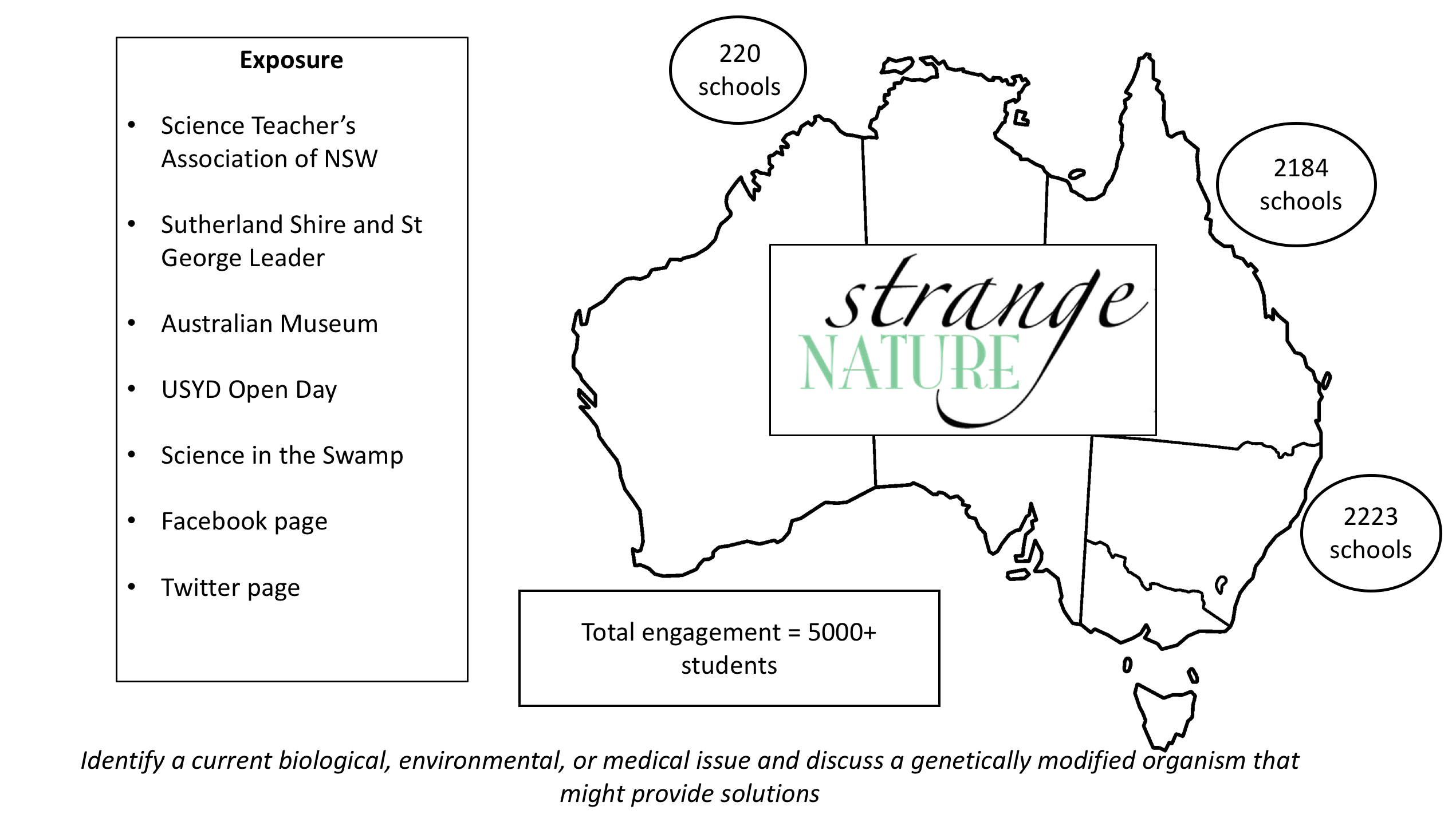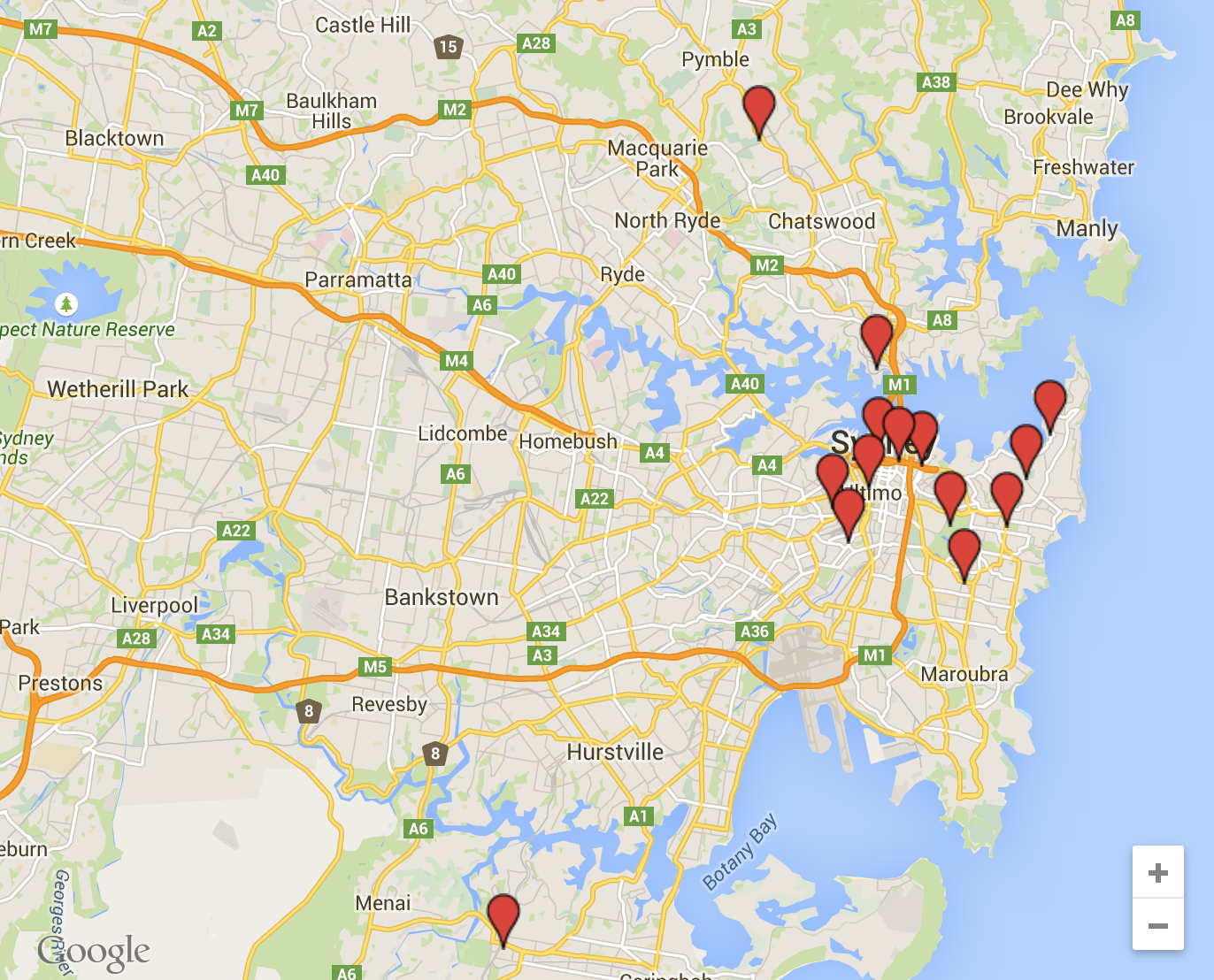Difference between revisions of "Team:Sydney Australia/EthicsMotivation"
| Line 5: | Line 5: | ||
| − | Early on in the competition, we realised there was a clear lack of understanding | + | Early on in the competition, we realised there was great misinformation and a clear lack of understanding surrounding the terms '''genetically modified''', and '''synthetic biology'''. When explaining our project to friends and family we were often greeted with some opposition and misconceptions which concerned us, such as ''"isn't it dangerous working with bacteria?"'', ''"what happens if you bring the GMO bacteria out of the lab?"'', ''"so how do you take DNA from one thing and insert it into another organism?"'' and the classic ''"but it is so unnatural"''. |
| − | When explaining our project to friends and family we were often greeted with some opposition and misconceptions which concerned us such as ''"isn't it dangerous working with bacteria?"'', ''"what happens if you bring the GMO bacteria out of the lab?"'', ''"so how do you take DNA from one thing and insert it into another organism?"'' and the classic ''"but it is so unnatural"''. | + | |
| − | We found these somewhat generic questions were reflective of a greater problem within our communities surrounding the lack of understanding of synthetic biology and GMOs. This was concerning to us especially given the increasing importance and prevalence of synthetic biology. We | + | We found these somewhat generic questions were reflective of a greater problem within our communities surrounding the lack of understanding of synthetic biology and GMOs. This was concerning to us especially given the increasing importance and prevalence of synthetic biology. We believe that in order for the remarkable and ground breaking research being performed by synthetic biologists across the world to be utilised to its full potential we need to shatter the misconceptions and prejudices held by many people. In particular, we sought to remove the stigma surrounding the term '''"genetically modified"'''. |
<h2> The solution </h2> | <h2> The solution </h2> | ||
| − | |||
| − | |||
:::::::::::::''"Education is the most powerful weapon which you can use to change the world."'' Nelson Mandela | :::::::::::::''"Education is the most powerful weapon which you can use to change the world."'' Nelson Mandela | ||
| − | + | Channeling the words of Nelson Mandela, we decided the best way to tackle this problem was through education: At community, school, and university levels. | |
| − | Channeling the words of Nelson Mandela, we decided the best way to tackle this problem was through education | + | |
| Line 28: | Line 24: | ||
| − | We did this in four ways: | + | We did this by breaking down our efforts in four ways: |
[[File: hpaims_sydney.jpg | center | 500px]] | [[File: hpaims_sydney.jpg | center | 500px]] | ||
| − | The details of our events can be found on the [https://2015.igem.org/Team:Sydney_Australia/Outreach outreach] and [https://2015.igem.org/Team:Sydney_Australia/Media media]. | + | The details of our events can be found on the [https://2015.igem.org/Team:Sydney_Australia/Outreach outreach] and [https://2015.igem.org/Team:Sydney_Australia/Media media] pages. |
<h2> Analysis </h2> | <h2> Analysis </h2> | ||
| − | We designed all of our outreach events specifically to target a wide demographic of people as seen in the charts below: | + | We designed all of our outreach events specifically to target a wide demographic of people, as seen in the charts below: |
| Line 43: | Line 39: | ||
| − | The figure above shows how our public engagement events were designed to specifically incorporate different ages from preschoolers to seniors. Some of our events were suitable to only one group | + | The figure above shows how our public engagement events were designed to specifically incorporate different ages from preschoolers to seniors. Some of our events were suitable to only one group: For example, the [https://2015.igem.org/Team:Sydney_Australia/Outreach Discover Uni Day], was specific for Year 6 children. On the other hand, other events were designed to be suitable for multiple ages. For example, at the Science in the Swamp event we had numerous activites targeted for the plethora of ages we would encounter. We had giant microbes and a hand held microscope for the younger children, a "Write your name in DNA" station for school aged children who had heard of DNA before, and an electrophoresis gel for those at high-school and university who had a greater knowledge of DNA (although all the children were highly entertained by loading the gel). We found people of all ages were interested in our iGEM project, which we enjoyed explaining and illustrating. Finally, we gave presentations at five Rotary clubs across Sydney which were targeted at the older generations. In these talks we described our mono-oxygenase project, focused on the development of synthetic biology over the last few decades, were able to bring up more controversial issues, and had engaged and informed discussions. |
Revision as of 12:41, 15 September 2015
Motivation & analysis
The Problem
Early on in the competition, we realised there was great misinformation and a clear lack of understanding surrounding the terms genetically modified, and synthetic biology. When explaining our project to friends and family we were often greeted with some opposition and misconceptions which concerned us, such as "isn't it dangerous working with bacteria?", "what happens if you bring the GMO bacteria out of the lab?", "so how do you take DNA from one thing and insert it into another organism?" and the classic "but it is so unnatural".
We found these somewhat generic questions were reflective of a greater problem within our communities surrounding the lack of understanding of synthetic biology and GMOs. This was concerning to us especially given the increasing importance and prevalence of synthetic biology. We believe that in order for the remarkable and ground breaking research being performed by synthetic biologists across the world to be utilised to its full potential we need to shatter the misconceptions and prejudices held by many people. In particular, we sought to remove the stigma surrounding the term "genetically modified".
The solution
- "Education is the most powerful weapon which you can use to change the world." Nelson Mandela
Channeling the words of Nelson Mandela, we decided the best way to tackle this problem was through education: At community, school, and university levels.
Presentations and workshops for school children and the community are common Human Practices activities in the iGEM competition and we acknowledge the value and effectiveness of such presentations. However, we wanted to expand and improve on these common activities to increase the effectiveness and exposure of our Human Practices project. We did some research and found that most presentations and/or workshops were aimed at only one specific audience, mainly school children. Consequently, we actively sought to target as many different demographics on as many different platforms as possible.
We did this by breaking down our efforts in four ways:
The details of our events can be found on the outreach and media pages.
Analysis
We designed all of our outreach events specifically to target a wide demographic of people, as seen in the charts below:
The figure above shows how our public engagement events were designed to specifically incorporate different ages from preschoolers to seniors. Some of our events were suitable to only one group: For example, the Discover Uni Day, was specific for Year 6 children. On the other hand, other events were designed to be suitable for multiple ages. For example, at the Science in the Swamp event we had numerous activites targeted for the plethora of ages we would encounter. We had giant microbes and a hand held microscope for the younger children, a "Write your name in DNA" station for school aged children who had heard of DNA before, and an electrophoresis gel for those at high-school and university who had a greater knowledge of DNA (although all the children were highly entertained by loading the gel). We found people of all ages were interested in our iGEM project, which we enjoyed explaining and illustrating. Finally, we gave presentations at five Rotary clubs across Sydney which were targeted at the older generations. In these talks we described our mono-oxygenase project, focused on the development of synthetic biology over the last few decades, were able to bring up more controversial issues, and had engaged and informed discussions.
Thie figure above shows how our public engagement events were suitable to primary school, high school, and university education levels. As with the age based breakdown, some of our events were catered for only one level, whereas others were suitable for multiple. Our science creation competition [http://strangenature.org/index.html Strange Nature] was applicable for primary and high school students, and most of our articles were suitable to university students. This split allowed us to focus on more specific issues and aspects of our project, and have an engaged discussion with the groups.
The figure above shows how our events were designed for those with both a science and non-scientific backgrund. The boxes in green are public engagement events that required some scientific knowledge, the boxes in maroon represent the events that required no sciencetific knowledge, and the boxes in blue are events that were suitable for both those with a scientific and non-scientific background.
The figure above shows the different platforms we utilised to spread the message about synthetic biology, our project, and the competiton. We were published in numerous local newspapers which had an online and print format, such as the [http://www.theleader.com.au/story/3238189/synthetic-biology-offers-medical-hope-and-a-sutherland-aspiring-scientist-is-looking-for-answers/ Sutherland Shire and St George Leader]. Some interviews and articles were exclusively online, such as the [http://www.abc.net.au/radionational/programs/scienceshow/syd-uni-designer-genomes-in-world-competition/6525626 ABC Radio Interview], and the Rotary article was only available in print form. Consquently, by using these multiple platforms, we were able to target a much larger and more diverse readership.
Evaluation
The results of our outreach activities are shown below.
The figue above shows the number of people that attended and were engaged in our outreach events. Our largest audience was at Science in the Swamp where we spoke to over 10 000 people. Our smallest audience was at the SUMS and Kambala presentation where there were only 20 students. However, this small audience allowed us to create a multi-way discussion and allowed a greater audience interaction - which was incredibly beneficial and effective.
As stated above, Science in the Swamp garnered our largest audience. We had over 10 000 people at the event and a national and international media reach of over 20 millio Australia wide! Furthermore, the event was featured on Chinese Television.
We were successful in gaining exposure through our publication in local newspapers as well as through the University of Sydney media outlets. The total readership of the three local papers we were published in was almost half a million people! In these articles we were able to go into greater detail about our project and the reasoning behing our project.
Like in 2013 and 2014, Strange Nature was a huge success. We contacted a greater number of schools and organisations nation wide than in previous years. Furthermore, we advertisied the compeition during our other outreach programs which was successful in increasing the awareness or the compeition. On the 18th of September we had recieved 15 enteries - however, it is imperative to remember that the competition does not close until the 5th of October. Judging from the previous years, majority of the enteries were recieved in the last week before the competition closed. Thus, even though 15 enteries is smaller than last year - we are confident we will many more.
Conclusion
The purpose of our Human Practices project was to educate the community in synthethic biology and genetically modified organisms.
We built upon ideas from past iGEM teams and used presentations, workshops, stalls, and competitions to engage our community.
To improve on the work produced by past teams, we focused on four areas -
From the above charts, graphs, and numbers we believe we successfully created an effective, inclusive, and informative Human Practices project.

